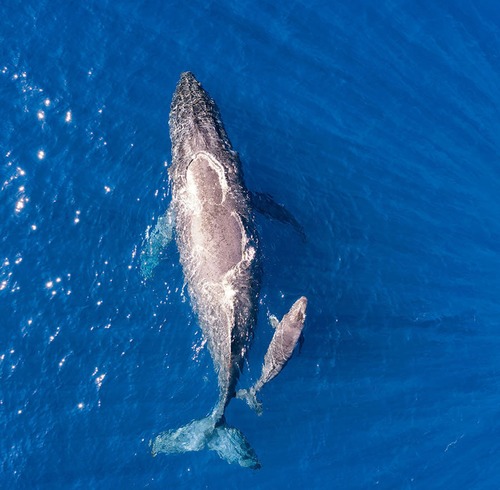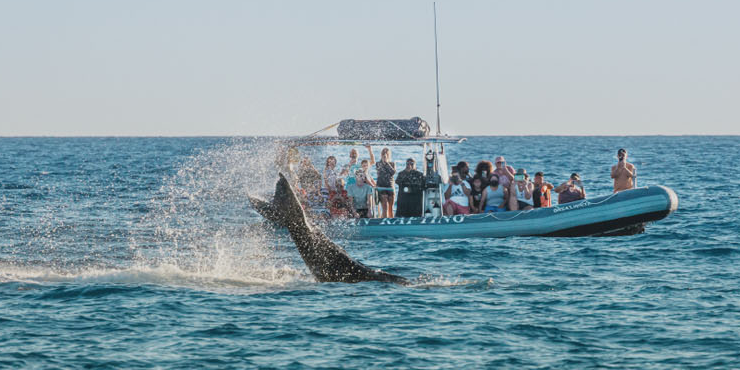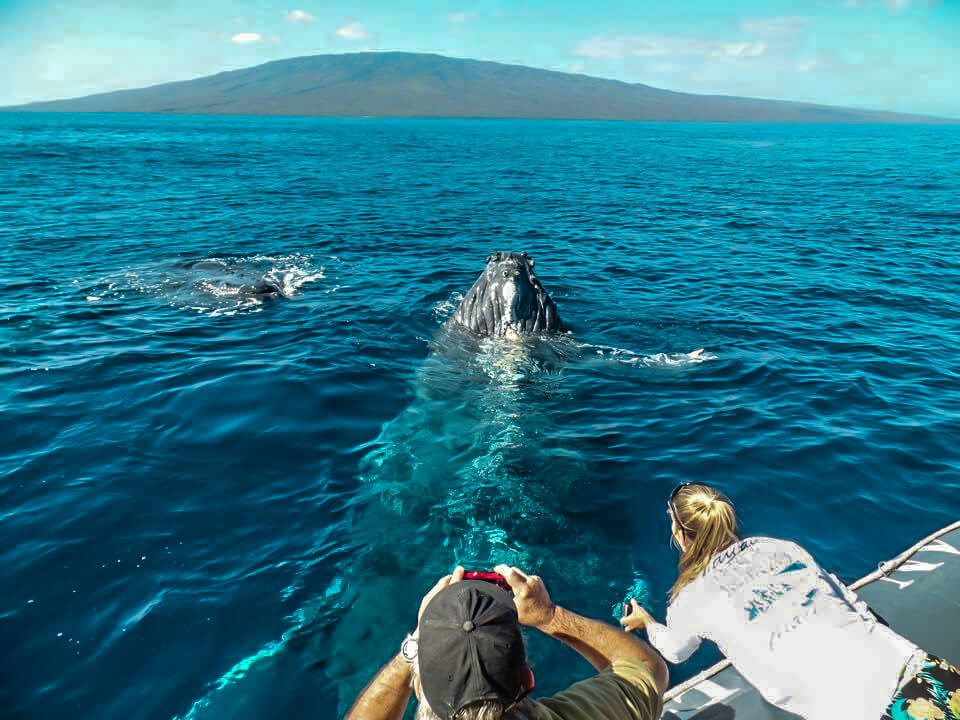Maui Whale Watch Eco-Rafting Tours
Whale watch upclose in Maui with eye-level viewing on our low-to water eco-rafts. Small groups of 16 or less make every Maui whale watch a family style tour. Don’ t miss Maui’s best whale watching adventure!





Whale watch upclose in Maui with eye-level viewing on our low-to water eco-rafts. Small groups of 16 or less make every Maui whale watch a family style tour. Don’ t miss Maui’s best whale watching adventure!




- Alison G TripAdvisor
- Sue_G Tripadvisor
- Dave_C Tripadvisor
SEASONAL TOUR DECEMBER-APRIL
Seasonal Dec-April
Guaranteed Whale Sightings
Small Group Tour <16
2 Hour
Morning & Sunset
Departure Lahaina Harbor, Slip 8
Seasonal May-Nov.
Adults
Kids (3-12yrs)
Private Charter
$69 + tax
$54 + tax
$900 + tax
Seasonal Dec-April
Guaranteed Whale Sightings
Small Group Tour <16
2 Hour
Afternoon
Departure Lahaina Harbor, Slip 8
Seasonal May-Nov
Adults
Kids (3-12yrs)
Private Charter
$54 + tax
$45 + tax
$900 + tax
1-2 Snorkel Stops + Whale Watching
Breakfast & Snacks
Snorkel Gear & Instruction
4 Hour
Check in 9am/9:30am Departure
Lahaina Harbor, Slip 8
Adults
Kids (4-12yrs)
Private Charter
$139 + tax
$109 + tax
$1800 + tax



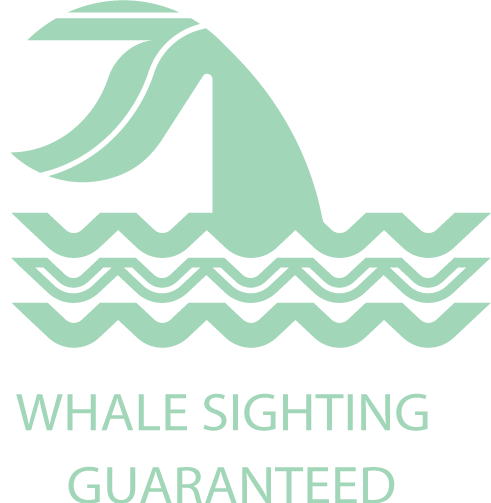
2HR Maui Whale Watch Tour & Discount Whale Watch
Adventure Whale Watch Tour. Eco-Rafting Vessels.
Depart Lahaina Harbor and search for whales along Maui’s coast and towards the island of Lanai.
bserve the Northern Pacific Humpback Whale displaying behaviors related to mating and raising their young.
Listen to whale songs on our hydrophone onboard.
earn about Maui, humpback whales and Hawaiian history from your Marine Naturalist Guide.v
Small group rafting whale watch tour for <16 guests.
Low-to-water rafting vessels allow for eye-level whale encounters.
Guaranteed whale sighting or go again free. Whale encounters vary in their natural habitat.
Hydrophone for listening to whale songs. Educational talks by our Marine Naturalist. Complimentary Reef Safe Sunscreen available. Purified water and biodegradable cups onboard.
Bring towels, hat, sunglasses, reef safe sunscreen or a sun shirt! BYOB ok, just no glass containers.
Expect to get wet on the rafting tour. Dress accordingly and bring a waterproof bag for personal items.
Camera or GoPro for photos and videos Gratuity for crew (Venmo accepted)
Due to our style of vessel and activities, no children under 3 on tours, no pregnant or persons with back or neck injuries.
Please no spray sunscreen, rub on reef safe sunscreen is welcome.
At least 24 hour notice for cancellations and refunds. For parties of 5 or more, 72 hours notice is required.
Tours may be canceled or rescheduled by Hawaii Ocean Rafting due to capacity or weather.
WHALES.
We’ve been sharing our award winning Maui whale watching tours for more than 30 years with visitors from around the world.
Our rafting vessels are low to the water, giving guests the opportunity for eye-level encounters with humpback whales. Our rafts are small-group tours for <16 or less guests, giving every guest an oceanfront seat on the boat. The small group also means one-on-one education with our marine naturalists who are sharing info and answering questions about Maui’s amazing humpback whales.
The humpback whale migration to Maui is one of the most popular reasons to visit Maui. From December to April, humpback whales migrate to Maui, most residing in the Maui Nui Basin located between Lahaina, Maui and Lanai.
Encountering humpback whales in the wild is something you don’t want to miss while visiting Maui!
While Kohola (whales) have been a part of Hawaiian culture since the beginning as reflected in the chant of creation which tells the story of the birth of the whales in the ocean, they are rarely mentioned in legends and only a few petroglyphs have been found with images of whales. Historians don’t know if this is due to there being fewer whales in Hawaii previously or if they were considered sacred and their information kept secret.
Kohola also refers to a flat reef which can resemble a whale when the waves wash over the reef causing spray similar to a whale spout. An earlier Hawaiian word for whales was palaoa, more specifically referring to sperm whales.
Two of Hawaii’s few whale petroglyphs can be found on Maui and Lanai. The whale depiction on Lanai is located at Palaoa Hill, the other whale drawing can be found in Olowalu, Maui.
When toothed whales washed ashore, their teeth were considered prized possessions and were made into leis for ali’i (royalty). Other items like fish hooks were also made from their teeth.
Whales or Koholoa are also considered ‘aumakua in Hawaiian culture, ancestors that have returned as spirit guides and guardians for their ohana. Entire species were not considered ’aumakua, rather a special encounter with a particular animal may indicate the presence of an ancestor seeking to communicate, comfort or assist their family. The ‘aumakua wouldn’t perma- nently reside within that animal, rather they can possess both inanimal and living things to be there for their family.
Northern Pacific Humpback whales are one of seven baleen whale species that have been seen in Hawaii. Baleen whales are whales that have baleen for eating, not teeth. Humpback whales are the most common baleen whale to see in Hawaii, attracting thousands of visitors every migration season.
Humpback whales got their name from the rounded back that shows as they sound or dive down. They are best known for their giant pectoral fins, displaying at length of 16 feet. These gentle giants can reach lengths of 40 feet and 40 tons, making them bigger than our whale watching vessels.
Humpback whales mate, give birth and nurse their young in Hawaii in the winter before returning to Alaska to feed on krill, plankton and other small marine life. Humpback whales migrate in a trickle pattern, some being seen as early as October and as late as June in Maui. The majority of whales can be seen in Maui from December through April, peaking their numbers in Janu- ary, February and March. The more animals present the more encounters, but sometimes you just need one curious whale to have the more memorable whale watch and often it’s the curious adolescents that migrate early to Hawaii.
About 80% of the 10,000 Northern Pacific Humpback whales that migrate to Hawaii come to Maui. Not all whales are present at once due to the trickle migration pattern. It is speculated the shallow warm waters between Maui and Lanai called the Maui Nui Basin acts as a sheltered, safe space for the whales. Mother whales especially love the shallow reefs of Olowalu and West Maui for giving birth and nursing their young.
An estimated 240,000 Baleen whales were hunted in the Pacific in the 20th century, rapidly declining their population. Whaling has since been outlawed in the United States and many other countries, but almost all baleen whales remain on the endangered species list.
In 1997 the Hawaiian Islands National Marine Sanctuary was designated in Maui to create a protected area for humpback whales to safely migrate to and reproduce. From December through April, many on-water activities such as parasailing and jet skiing are suspended while whales are in the Maui Nui Basin. Humpback whales can also not be approached closer than 100 yards which means no swimming with whales.
Humpback whales have greatly benefited from their protections and we have seen their population rebound. Every year volun- teers from marine organizations monitored by NOAA, count the number of humpback whale sightings from January through March. The most recent count showed an increase of population in January by 57%, February by 63% and March by 15%.
It’s estimated the population of humpback whales has increased from its lowest at 10,000 to approximately 80,000 animals, growing on average by about 10% every year in the last decade.
The goal of our whale watching tours is to educate visitors on the protections of humpback whales and how to better be eco-minded in our daily lives to better aid the recovery of our oceans as a whole. And on occasion we’re also lucky enough to have a close whale encounter when the whales decide to approach our low-to-water rafts!
Humpback whales migrate from Alaska back to Maui every year to mate, give birth and raise their young. Surface behavior displays communication between males competing for a female in a competition pod, male and females trying to get the attention of the other and mom teaching their young.
Some of the most frequent whale behaviors you will see have moves that have been given names!
Pec Fin Slap
Humpback whales will use their large (sometimes up to 15 feet) pec fins to make noise while slapping the surface of the water. This big splash gets the attention of other whales and of course whale watchers! Often they repeat this move dozens of times! Breach
The famous breach is a fan favorite. Hard to imagine a 40 ton animal propelling itself out of the water in one intense leap, but that’s what breaching is! Swimming up to 18 mph gives the whale enough momentum to breach. Researchers speculate that whales breach to clean themselves and remove things like barnacles. They also believe they breach to communicate, exercise
and just have fun!
Head Lunge
Humpback whales most frequently use head lunges when fighting with other male whales in a competition pod. They will often lunge their heads out of the water to also clean themselves and communicate.
Spy Hop
When a humpback whale sticks it’s nose out of the water it’s called a spy hop. This move allows them to look above the water, often curious whales will do this near the whale watching boat. In that case we wonder who is actually watching who!
Mugging
When a humpback whale decides to approach a vessel within the 100 yard boundaries we refer to this as a mugging. To protect the whale, vessels turn off engines and allow the whale to “mug” the boat, while onlookers get to enjoy this amazing close whale encounter.
While humpback whales can be seen almost anywhere on Maui, the majority of humpback whales reside along the west coast of Maui, in front of Lahaina Harbor.
Because of the shallow water between Maui and her neighbor island of Lanai, Molokai and Kahoolawe, the Maui Nui Basin became the residing place of choice for the majority of humpback whales migrating to Hawaii. The reef along Maui’s west coast and Lahaina, known as Olowalu is a favorite resting place for moms with calves. The milder weather in Lahaina due to the protected West Maui mountains,also makes it the top place to whale watch from. This is also why the Humpback Whale National Marine Sanctuary designated these waters a protected place for humpback whales.
From shore you can see whales along the Pali and pull off to watch at the McGregor Point parking lot overlooking Maalaea Harbor. During peak migration months you can watch whales breaching from your balcony if you are staying in Lahaina, Kaanapali or the upper west side of Maui.
For closer whale encounters boat tours take you to search for whales displaying active surface behavior. While we do not approach whales closer than federal regulations, often whales will come to our boats, making for eye-level experience on our low to water rafting style vessels.
The number one reason rafts are the best way to whale watch is the low-to -water style of the vessel. When humpback whales choose to approach a boat, instead of looking over a railing 4-8 feet above the whale, you are eye-level with the whale, getting splashed on or putting your waterproof camera in the water for epic video captures of underwater activity.
Second reason rafts are the most popular way to whale watch are the smaller group tours. Every tour is family style with 16 or less guests, making every seat front row to the ocean and whale activity. You also have a chance to get to know your crew and other whale watchers, sharing the adventure and making memories!
Although we may see dolphins or other rare toothed whales like pseudo orcas, the Northern Pacific humpback whales are our primary focus for our Maui whale watching tours. Northern Pacific humpback whales migrate between Maui and Alaska every year, coming back to Maui to mate and give birth (and maybe for a tropical vacation).
Although humpback whales are wild and we cannot predict their activity or behavior, our captains and marine naturalists have many years of experience observing whales and finding the most active whales to watch in Maui’s warm waters.
Whale behavior you may observe includes whale tails (also called flukes), pec fin slaps, head lunges and the famous breach! Sometimes humpback whales even approach our boats closely and check us out! This is called a mugging and only happens when the whale chooses to approach us as we closely follow Federal Regulations which do not allow us to approach humpback whales closer than 100 yards.
There is no time of day when whales are more active. Their activity patterns are 24 hours a day. We cannot predict what whales will do or where they will be. Observing humpback whales in the wild is an adventure and every tour is different!
No matter the encounter, observing these 40 ton, 40 foot gentle giants is a once in a lifetime experience on your Maui vacation!
Humpback whales migrate to Maui from Alaska every winter to mate and give birth. Their trickle migration begins in late fall and ends in the spring. We start to see enough whales to whale watch in Maui starting in December and continue tours into April!
Best time of day to whale watch is anytime!
Whales go through periods of activity and rest 24 hours of day so they can also be seen any time of day in Maui, and our sunrise to sunset whale watch tours give you any option that best fits your vaca- tion schedule!
Lahaina is also located on the leeward side of the West Maui Mountains, creating the most consistent and driest weather on the island of Maui. This means we have the most sunny days on Maui, making it the best place to snorkel in Maui! Often it will be raining in Wailea or Kaanapali and be dry in Lahaina. Because we are a tropical island, weather reports are rarely accurate more than 24 hours out and we use special NOAA and sailing weather reports to get the most accurate weather for our Maui snorkel destinations. With that in mind, we will reschedule Maui snorkel tours due to weather if it will be unpleasant or unsafe for our guests.

Looking for a different tour?
Check out our other
ocean adventures!
Looking for a different tour?
Check out our other ocean adventures!
